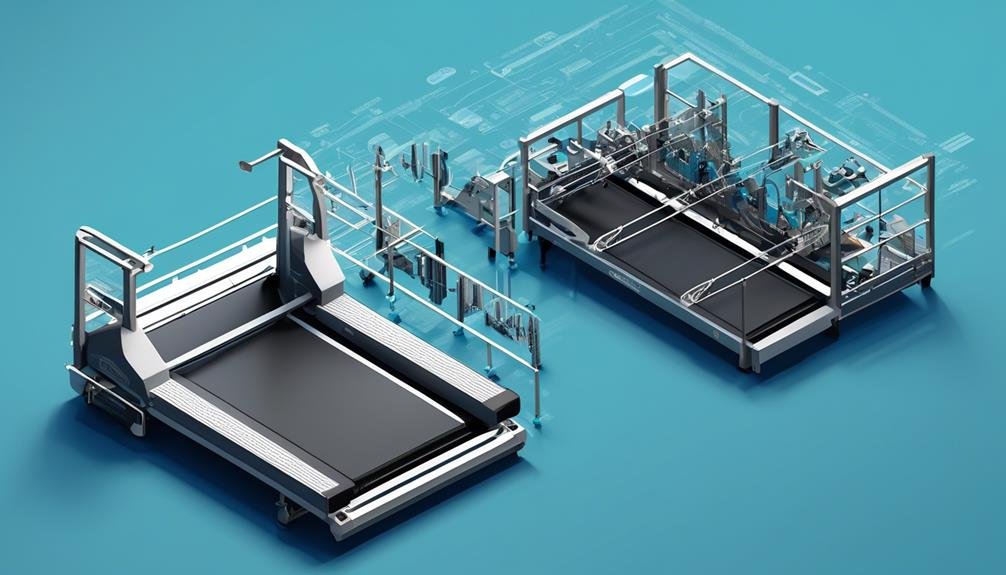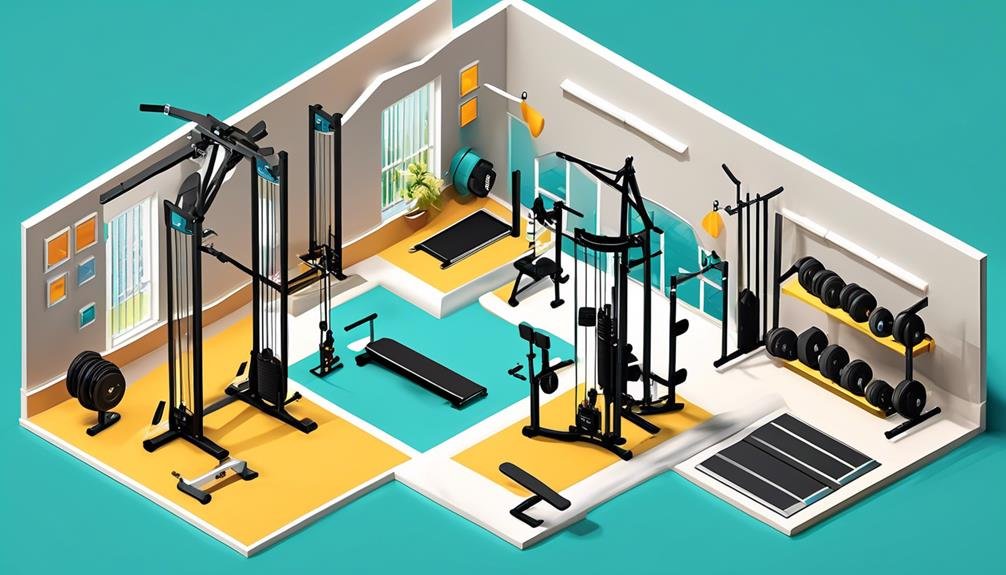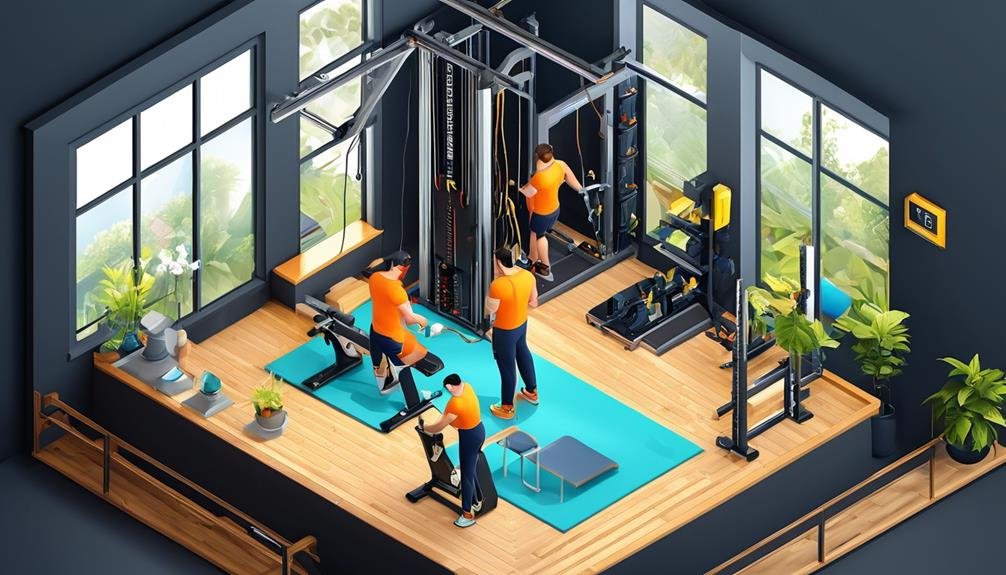Disclaimer: This content is for informational purposes only and does not replace professional medical advice, diagnosis, or treatment. Always consult a qualified healthcare provider before beginning any new exercise program.
Are you considering investing in a commercial grade treadmill for your fitness facility or home gym? Before you make a decision, it's important to understand the kind of warranty that comes with such high-end equipment.
Picture this: you've just purchased a top-of-the-line treadmill from a reputable manufacturer, but what happens if it malfunctions or breaks down? Will you be left with a hefty repair bill?
In this discussion, we will explore the various aspects of warranties that typically accompany commercial grade treadmills, including coverage periods, inclusions, limitations, and more.
So, let's dive into the world of warranties and ensure you make an informed choice.
Key Takeaways
- Commercial grade treadmills typically come with a warranty ranging from 1 to 5 years.
- The warranty covers repairs or replacements of faulty parts related to defects in materials or workmanship.
- Normal wear and tear, accidental damage, and cosmetic damage are not covered by the warranty.
- Extended warranties can be purchased to extend the coverage period and provide additional peace of mind.
Coverage Period
The coverage period for a commercial grade treadmill warranty typically ranges from one to five years, depending on the manufacturer. This period refers to the duration of time during which the warranty is valid and provides coverage for any potential issues or defects that may arise with the treadmill.
During the coverage period, the manufacturer is responsible for repairing or replacing any faulty parts or components of the treadmill at no additional cost to the customer. This can include anything from malfunctioning motors or electronics to broken belts or frames. It's important to note that the warranty typically only covers defects in materials or workmanship and doesn't cover normal wear and tear or damage caused by misuse or neglect.
The length of the coverage period can vary between manufacturers, with some offering shorter warranties of one or two years, while others provide longer warranties of up to five years. It's essential for customers to carefully review the terms and conditions of the warranty to understand what's covered and for how long.
Additionally, it's advisable to consider purchasing an extended warranty for further coverage beyond the initial coverage period.
Inclusions of the Warranty
You can expect the commercial grade treadmill warranty to cover a range of components and potential issues that may arise during the coverage period. Here are the key inclusions of the warranty that you should be aware of:
- Motor: The warranty typically covers the motor, which is one of the most critical components of a treadmill. It protects against defects and malfunctions that may occur during the warranty period. This ensures that you can rely on the treadmill to provide consistent performance without worrying about motor-related issues.
- Frame and Structure: The warranty also covers the frame and structure of the treadmill. This includes any defects or damages that may affect the stability or integrity of the machine. It gives you peace of mind knowing that the treadmill is built to withstand rigorous use and will be repaired or replaced if any structural issues arise.
- Electronics and Controls: Another important inclusion of the warranty is coverage for the electronics and controls of the treadmill. This includes the console, buttons, display, and any other electronic components. If there are any faults or malfunctions with these parts, the warranty will ensure that they're repaired or replaced, allowing you to continue using the treadmill without interruption.
Limitations and Exclusions

Limitations and exclusions are important aspects to consider when reviewing a commercial grade treadmill warranty. While warranties provide coverage for certain issues, it's equally important to understand what is not covered. To help you better understand the limitations and exclusions of commercial grade treadmill warranties, here is a table outlining some common examples:
| Limitations | Exclusions |
|---|---|
| Normal wear and tear | Accidental damage or misuse |
| Cosmetic damage | Acts of nature (e.g., fire, flood) |
| Routine maintenance | Unauthorized repairs or modifications |
| Non-commercial use | Use of improper voltage or power source |
These limitations and exclusions aim to protect the manufacturer from liability for damages caused by user error or events beyond their control. It's important to carefully read and understand the warranty terms before purchasing a commercial grade treadmill. By doing so, you can ensure that you are aware of any limitations or exclusions that may affect your coverage. Remember, warranties are designed to provide peace of mind, but they also have limitations to protect the manufacturer's interests.
Extended Warranty Options
Consider exploring extended warranty options to further protect your investment in a commercial grade treadmill.
While commercial grade treadmills often come with a standard warranty, opting for an extended warranty can provide additional coverage and peace of mind.
Here are three reasons why you should consider an extended warranty:
- Enhanced coverage: An extended warranty typically extends the coverage period beyond the standard warranty, ensuring protection for a longer duration. This means that if any issues or defects arise during the extended warranty period, you can have them repaired or replaced at no additional cost.
- Cost savings: Investing in an extended warranty upfront can save you money in the long run. Repairing or replacing components of a commercial grade treadmill can be expensive, especially if you need to do so multiple times. With an extended warranty, you can avoid these unexpected costs and keep your treadmill in optimal condition without breaking the bank.
- Peace of mind: A commercial grade treadmill is a significant investment, and it's essential to have peace of mind knowing that your investment is protected. An extended warranty provides reassurance that you can rely on the manufacturer's support in case of any issues, allowing you to focus on your fitness goals without worrying about potential repairs or replacements.
Manufacturer's Warranty Vs. Retailer's Warranty

When comparing the warranty options for a commercial grade treadmill, it's important to understand the differences between the manufacturer's warranty and the retailer's warranty.
The manufacturer's warranty is provided by the company that produced the treadmill and covers any defects in materials or workmanship. It typically includes a specified time period during which the manufacturer will repair or replace any faulty parts at no cost to the customer. This warranty is usually more comprehensive and longer-lasting than the retailer's warranty.
On the other hand, the retailer's warranty is offered by the store or website where the treadmill was purchased. It may provide additional coverage beyond what the manufacturer's warranty offers, but it's usually for a shorter duration. Retailer warranties often include services such as in-home repairs or loaner treadmills while repairs are being made. However, it's important to note that retailer warranties are typically secondary to the manufacturer's warranty, meaning that any repairs covered by the manufacturer's warranty would need to be handled by the manufacturer directly.
When choosing between the manufacturer's and retailer's warranties, it's important to carefully review the terms and conditions of each. Consider factors such as the length of coverage, what's covered, and any exclusions or limitations.
Additionally, it's worth noting that some retailers may offer extended warranty options for an additional cost. These extended warranties can provide added peace of mind, but it's essential to evaluate whether the additional coverage is necessary and cost-effective for your specific needs.
How to Make a Warranty Claim
To initiate a warranty claim for your commercial grade treadmill, follow the steps outlined by the manufacturer or retailer. Making a warranty claim can be a straightforward process if you follow these steps:
- Review the warranty terms and conditions: Before making a claim, carefully read through the warranty documentation provided by the manufacturer or retailer. Pay close attention to any limitations, exclusions, or requirements for filing a claim.
- Gather necessary documentation: To support your warranty claim, you'll likely need to provide proof of purchase, such as a receipt or invoice. Additionally, take photos or videos of the issue you're experiencing with your treadmill. These documents will help expedite the claim process.
- Contact the manufacturer or retailer: Reach out to the manufacturer or retailer through their designated customer support channels. Provide them with all the necessary information, including your contact details, proof of purchase, and documentation of the issue. Be prepared to describe the problem in detail and answer any questions they may have.
Frequently Asked Questions
What Are the Maintenance Requirements for Commercial Grade Treadmills Covered Under the Warranty?
Commercial grade treadmill warranties typically cover maintenance requirements such as regular lubrication, belt alignment, and cleaning. These tasks help to ensure optimal performance and extend the lifespan of the treadmill. Regular maintenance is essential for keeping your treadmill in good working condition.
Are There Any Geographical Limitations to the Warranty Coverage?
There are no geographical limitations to the warranty coverage. It applies to commercial grade treadmills regardless of where they are located.
Does the Warranty Cover Accidental Damage, Such as Dropping Weights on the Treadmill?
The warranty for commercial grade treadmills does not typically cover accidental damage, such as dropping weights on the treadmill. It is important to read the specific terms and conditions of the warranty for more information.
Are There Any Restrictions on the Frequency of Use or the Hours of Operation for the Treadmill to Be Eligible for Warranty Coverage?
To be eligible for warranty coverage, there may be restrictions on the frequency of use or the hours of operation for the treadmill. Check the terms and conditions for specific details.
Can the Warranty Be Transferred to a New Owner if the Treadmill Is Resold?
Yes, the warranty can be transferred to a new owner if the treadmill is resold. This allows the new owner to benefit from the warranty coverage and ensures their investment is protected.
Conclusion
In conclusion, commercial grade treadmills typically come with a warranty that covers a specific period of time. The warranty includes certain inclusions but also has limitations and exclusions.
It's important to consider extended warranty options for additional coverage. Differentiating between the manufacturer's warranty and the retailer's warranty is crucial.
If needed, making a warranty claim should follow the specific instructions provided by the manufacturer or retailer.



